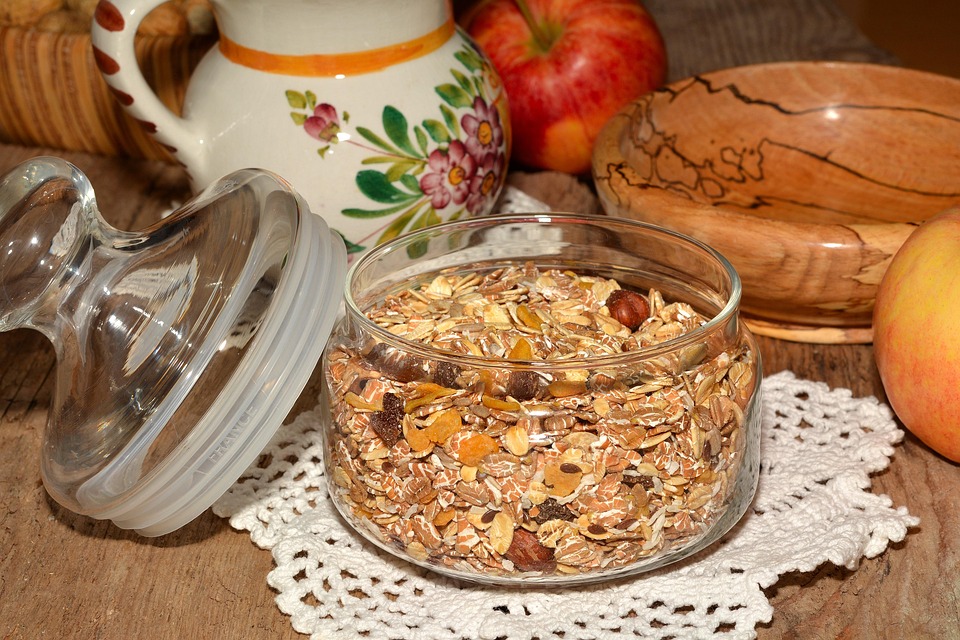Low carb breakfast for diabetics means choosing morning meals that are low in carbohydrates, rich in protein and healthy fats, and tailored to keep your blood sugar calm rather than spiking it. This matters because how you start the day sets the tone for energy, cravings, and glucose control. If you’re living with diabetes, the right breakfast can cut morning insulin swings, ease hunger, and keep you confident until lunchtime.
7 Low Carb Breakfast For Diabetics To Start
Bold choices beat bland ones. These seven breakfasts are simple, tasty, and built to support your glucose goals. I’m sharing practical swaps, quick recipes, and what to watch for — not food rules, but food freedom.
Why A Low Carb Breakfast Helps You Win The Morning
You don’t need to be a calorie cop. You need meals that slow digestion and stabilize glucose. Research from major health organizations shows lower carbohydrate meals often reduce post-meal blood sugar excursions and can improve overall control when balanced with protein and fiber.
Think about what you already love and make tiny swaps. Replace toast with avocado and eggs. Trade cereal for Greek yogurt with nuts. Those small moves make a big difference for your energy and mood.
How To Build A Smart Low Carb Breakfast
Start with a protein: eggs, Greek yogurt, cottage cheese, or smoked salmon. Add healthy fats: olive oil, avocado, nuts. Then fill with low-carb veggies or a small portion of berries. Portion control matters, but so does satisfaction. When you enjoy your food, you stick with it.
Watch hidden carbs in sauces, flavored yogurts, and fruit juices. Measure where it counts. If you use a glucose monitor, test after breakfasts you try — the data will teach you faster than any rule.
1. Savory Spinach And Feta Omelet
This is a classic that never feels like sacrifice. Whisk two eggs with a splash of milk, sauté fresh spinach in olive oil, fold in a sprinkle of feta, and cook until set. Serve with half an avocado and a few cherry tomatoes for color and fiber.
This meal keeps glucose steady thanks to high protein and healthy fats. It’s ready in ten minutes, portable if you wrap it, and forgiving if you change the cheese or add herbs. Use pasture-raised eggs if you can; they taste richer and add a little more nutrition.
2. Greek Yogurt Bowl With Nuts And Berries
Choose unsweetened full-fat Greek yogurt and scoop a half-cup into a bowl. Top with a tablespoon each of chopped walnuts and chia seeds, then add a small handful of blueberries. Sprinkle cinnamon for flavor and extra oxidative benefits.
This breakfast feels indulgent but is low in digestible carbs. The protein in Greek yogurt plus the fiber from seeds keeps you full. If you’re watching portions, measure the berries; they’re nutritious but can add up.
3. Smoked Salmon And Cream Cheese Roll-Ups
Spread a thin layer of cream cheese on slices of smoked salmon, add sliced cucumber and a squeeze of lemon, then roll. Pair with a small side salad of arugula dressed in olive oil and lemon.
Omega-3s from salmon are heart-friendly — and heart health matters if you have diabetes. These roll-ups are elegant, quick, and perfect when you want something light but satisfying. They’re also great for travel or a brunch that feels special.
4. Cottage Cheese Power Plate
Cottage cheese is a quiet powerhouse. Scoop half a cup, top with sliced radishes, chopped chives, and a drizzle of extra-virgin olive oil. Add a few slices of turkey or a boiled egg on the side for extra protein.
This meal is low in carbs and high in satiety. The tang of cottage cheese makes it feel fresh and simple without needing toast. Try whole-milk cottage cheese for creaminess and added caloric balance.
5. Almond Flour Pancakes With Ricotta
Yes, pancakes — but responsible ones. Make batter from almond flour, eggs, and a little baking powder. Cook small pancakes and serve topped with a dollop of ricotta and a few sliced strawberries.
Almond flour keeps the net carbs low and adds healthy fats. Ricotta offers protein and a mild sweetness so you can skip syrup. This is breakfast comfort that doesn’t derail your glucose.
6. Veggie-Packed Breakfast Muffins
Whisk eggs with grated zucchini, bell pepper, and a handful of spinach. Pour into muffin tins and bake until golden. Make a batch and freeze for busy mornings; reheat two and enjoy with a spoonful of plain yogurt.
These muffins are portable, customizable, and reliably low-carb. They’re a perfect bridge between whole-food cooking and modern life. Use them to tame rushed mornings without sacrificing control.
7. Chia Seed Pudding With Almond Milk
Combine chia seeds with unsweetened almond milk and a dash of vanilla, then chill overnight until pudding-thick. Top with crushed almonds and a few raspberries for texture and a hint of sweetness.
Chia seeds swell with liquid and release a slow-digesting gel that slows glucose absorption. This breakfast is great in summer or when you crave something cool and satisfying. Make portions modest — chia is calorie-dense.
Smart Swaps And Simple Rules
Focus on real food. When you replace grain-heavy items with protein and fat, you’ll notice fewer energy crashes. Use these swaps:
- Swap toast for avocado on a small plate.
- Trade fruit juice for whole berries.
- Replace sugary yogurt with unsweetened Greek yogurt plus seeds.
Also, monitor portion sizes and be mindful of added sugars in flavored items. If a product lists sugar on the label, treat it like a guest who overstays their welcome.
Balancing Medications And Meals
If you take insulin or medicines that lower glucose, changes to your breakfast should be discussed with your clinician. Small carb reductions can require dose tweaks. Bring this article and the meals you like to your next appointment and plan a safe adjustment.
Use blood glucose readings to guide changes. Many people are surprised at how different foods affect their numbers. Personalized data is powerful; use it.
Practical Tips For Busy Mornings
Prep ahead. Hard-boil eggs, make a batch of muffins, or portion Greek yogurt into jars. Keep staples on hand: eggs, nuts, seeds, Greek yogurt, canned salmon, avocado, and pre-washed greens.
Breakfast doesn’t need to be elaborate to be effective. Ten minutes is enough. Prioritize protein and fat, and let vegetables carry flavor and fiber. If you’re cooking for family, double recipes so you don’t shortchange yourself.
What The Science Says
Clinical evidence supports low-carbohydrate approaches as one tool in diabetes care when directed by a health professional. Universities and major medical centers report improvements in post-meal glucose and sometimes reduced medication needs with individualized low-carb plans. Consult reliable sources like the American Diabetes Association and public health institutions to match a plan to your life.
Bottom Line
Bold mornings create calmer days. Choose a low carb breakfast for diabetics that gives you steady energy, fewer sugar swings, and meals that taste like living, not limiting. Start with the favorites above, test what works for your body, and adjust with confidence. Small changes become habits, and good habits become the life you want.
FAQ
What Counts As A Low Carb Breakfast For Diabetics?
A low carb breakfast for diabetics centers on protein and healthy fats with minimal refined carbs. Examples include eggs with avocado, Greek yogurt with nuts, and cottage cheese with vegetables. Keep portions mindful and avoid sugary cereals and juices.
Will A Low Carb Breakfast Cause Low Blood Sugar?
If you’re on insulin or certain diabetes pills, dropping carbs suddenly can lower your glucose more than expected. Talk to your clinician before big changes and test frequently until you know how your body responds. Small, gradual swaps reduce risk.
How Quickly Will I See Results From Changing Breakfasts?
You may notice steadier energy within days and measurable glucose differences within a week when you test after meals. Long-term benefits like weight loss or medication adjustments may take weeks to months and depend on overall diet and activity.
Can I Include Fruit In A Low Carb Breakfast For Diabetics?
Yes—fruit in small portions can be part of a low carb breakfast for diabetics. Berries are excellent choices because they’re lower in sugar and high in fiber. Measure portions to keep carbs in your target range.
Is It Okay To Cheat Occasionally?
Absolutely. Life happens. A single higher-carb breakfast won’t ruin progress if you return to your plan and stay consistent overall. Notice how you feel afterward and use that as feedback, not punishment.
— — —
References
American Diabetes Association provides practical nutrition guidance and resources for diabetes management (https://www.diabetes.org).
Centers for Disease Control and Prevention discusses carbohydrate impact on blood sugar and diabetes prevention strategies (https://www.cdc.gov/diabetes).
Harvard T.H. Chan School of Public Health offers evidence-based insights on low-carbohydrate diets and health outcomes (https://www.hsph.harvard.edu).
National Health Service (NHS) in the UK explains healthy eating tips for people with diabetes (https://www.nhs.uk/conditions/diabetes/managing-your-diabetes/diet/).








